

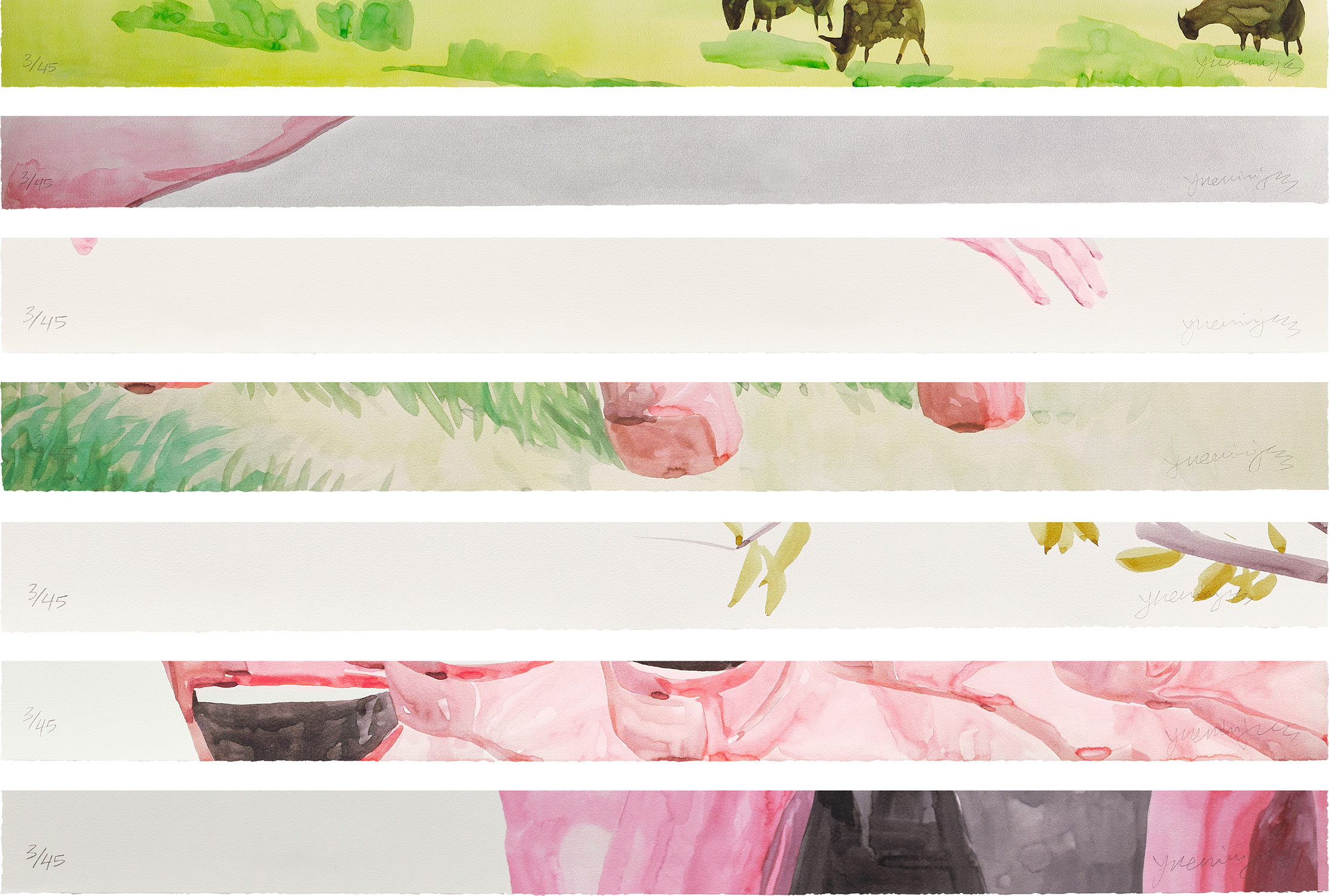

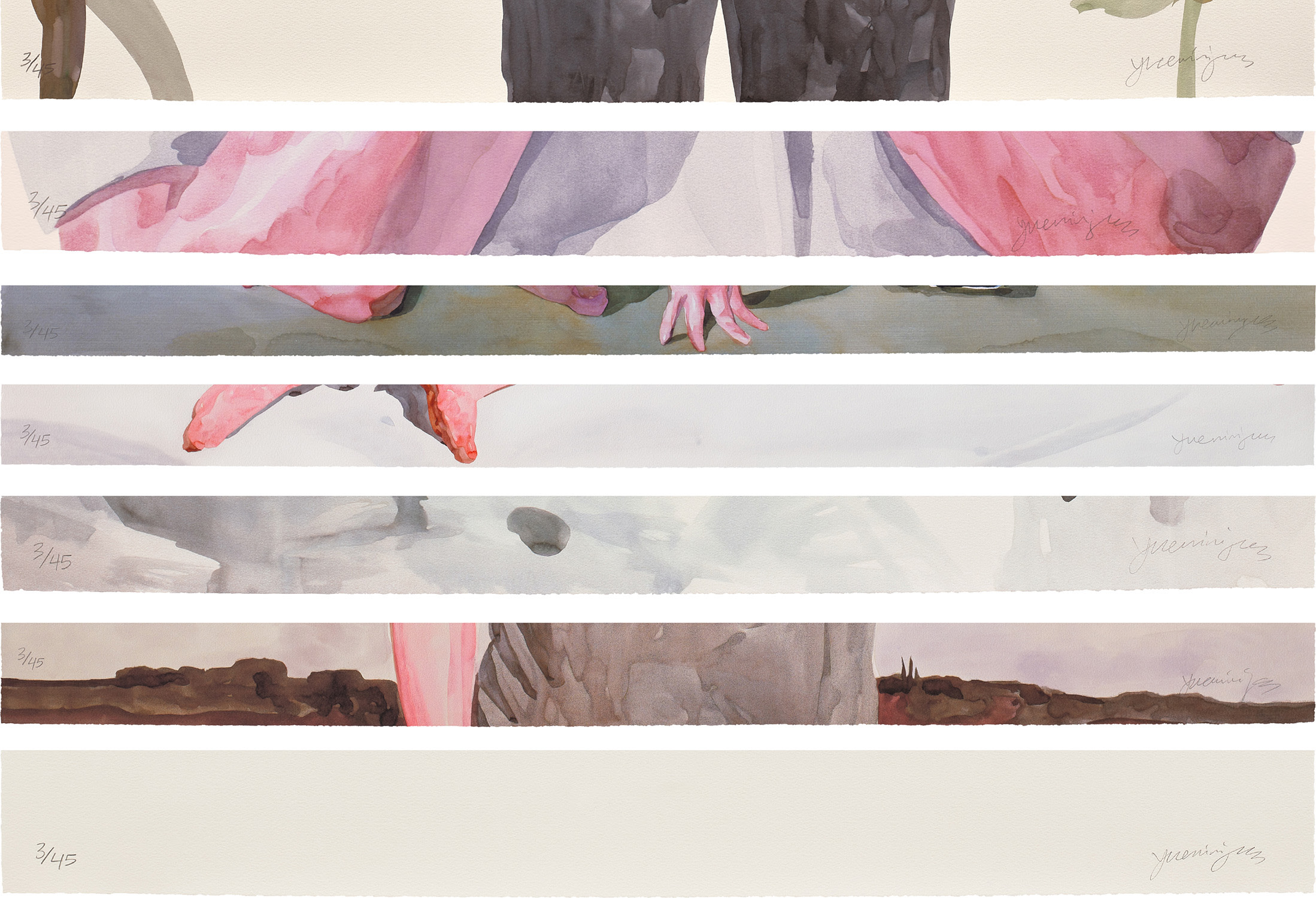
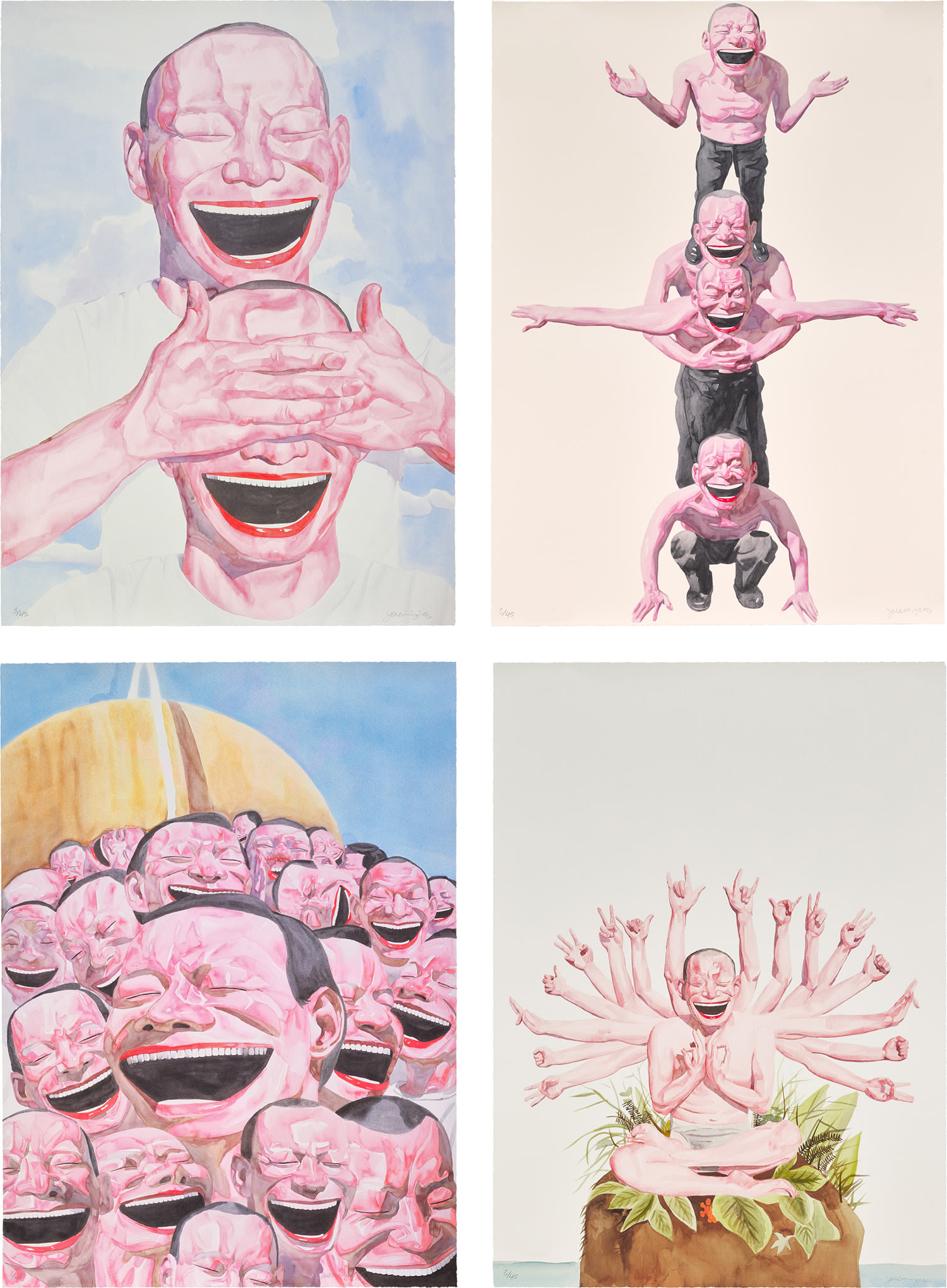

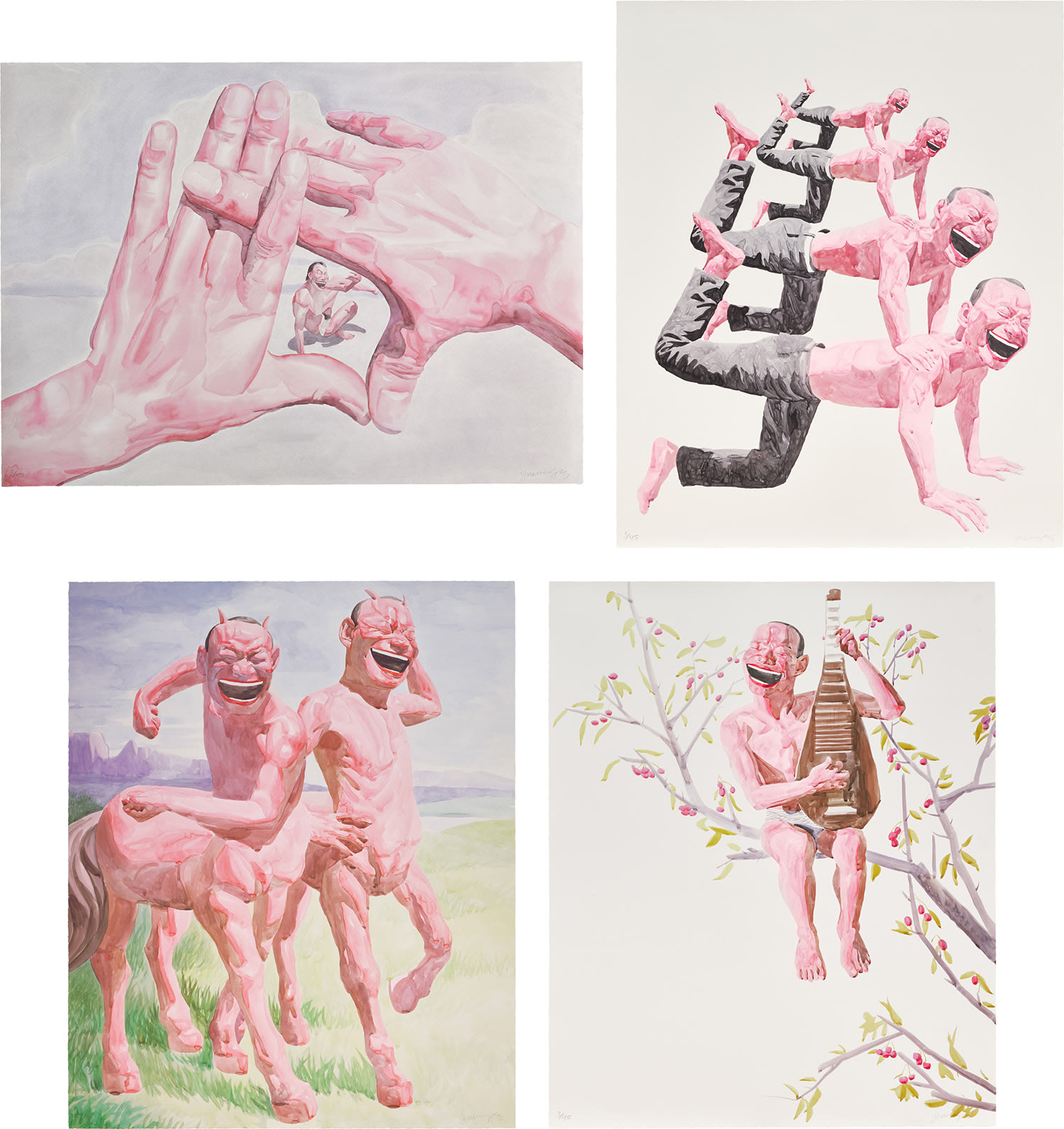
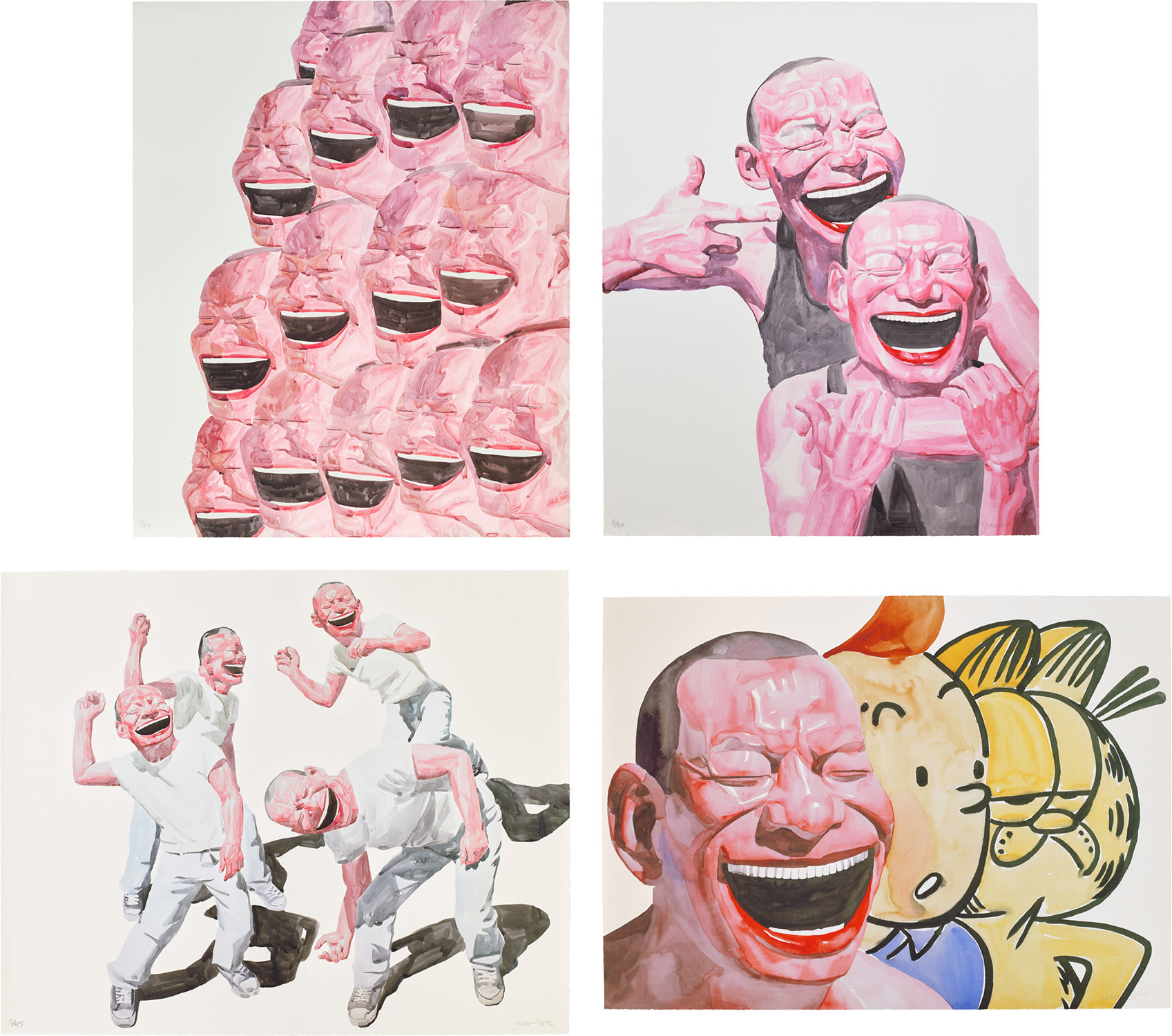
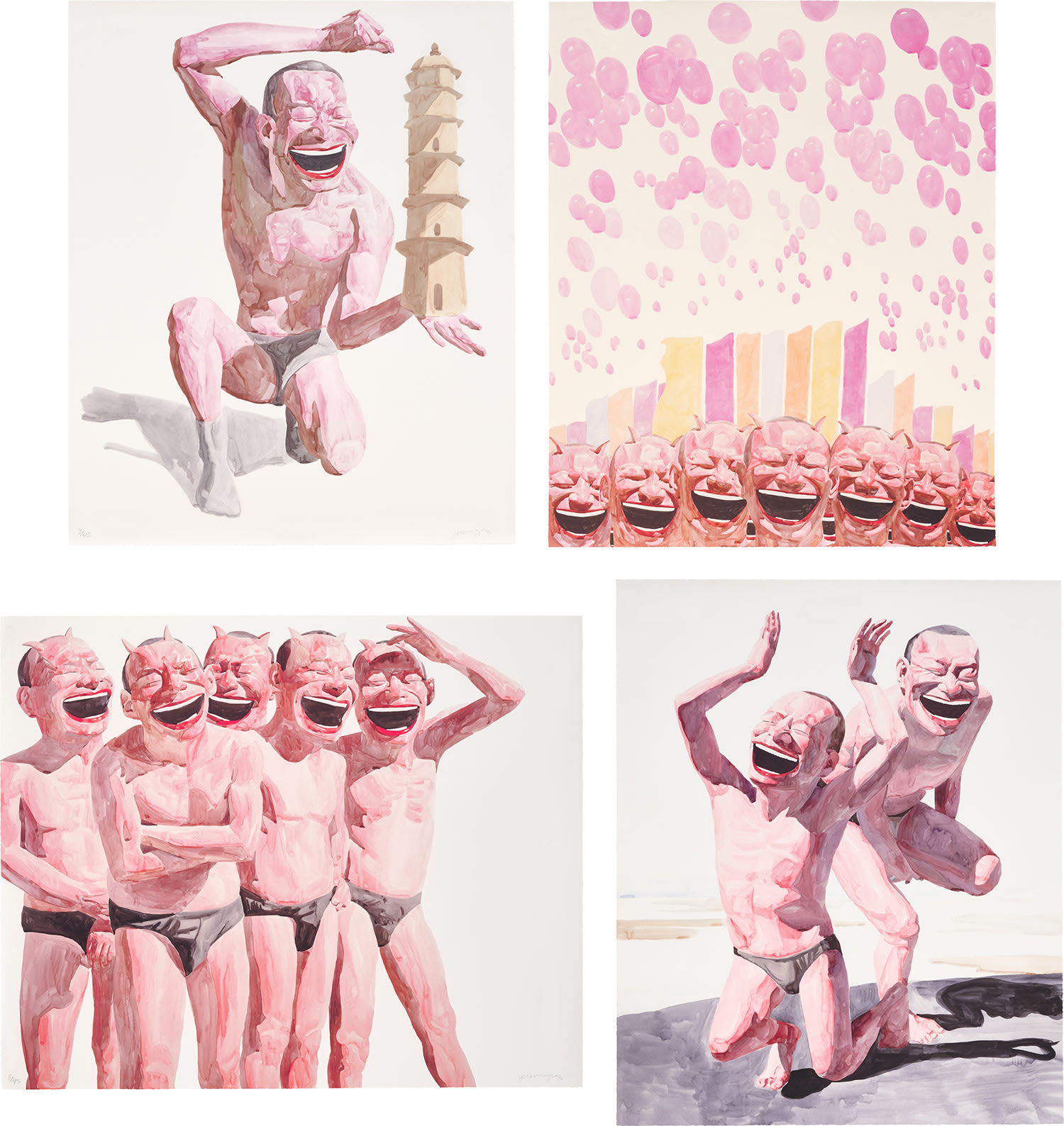
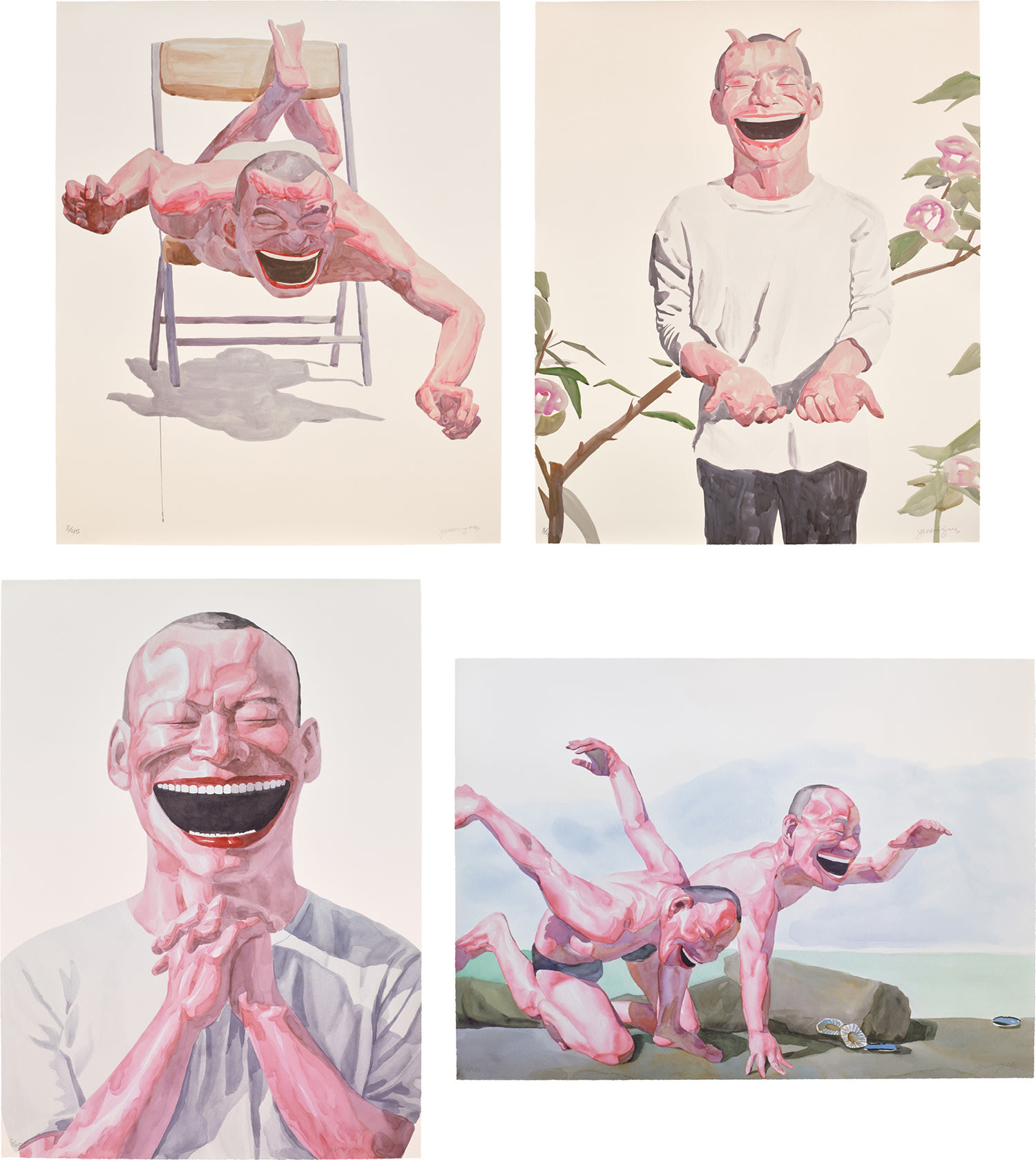
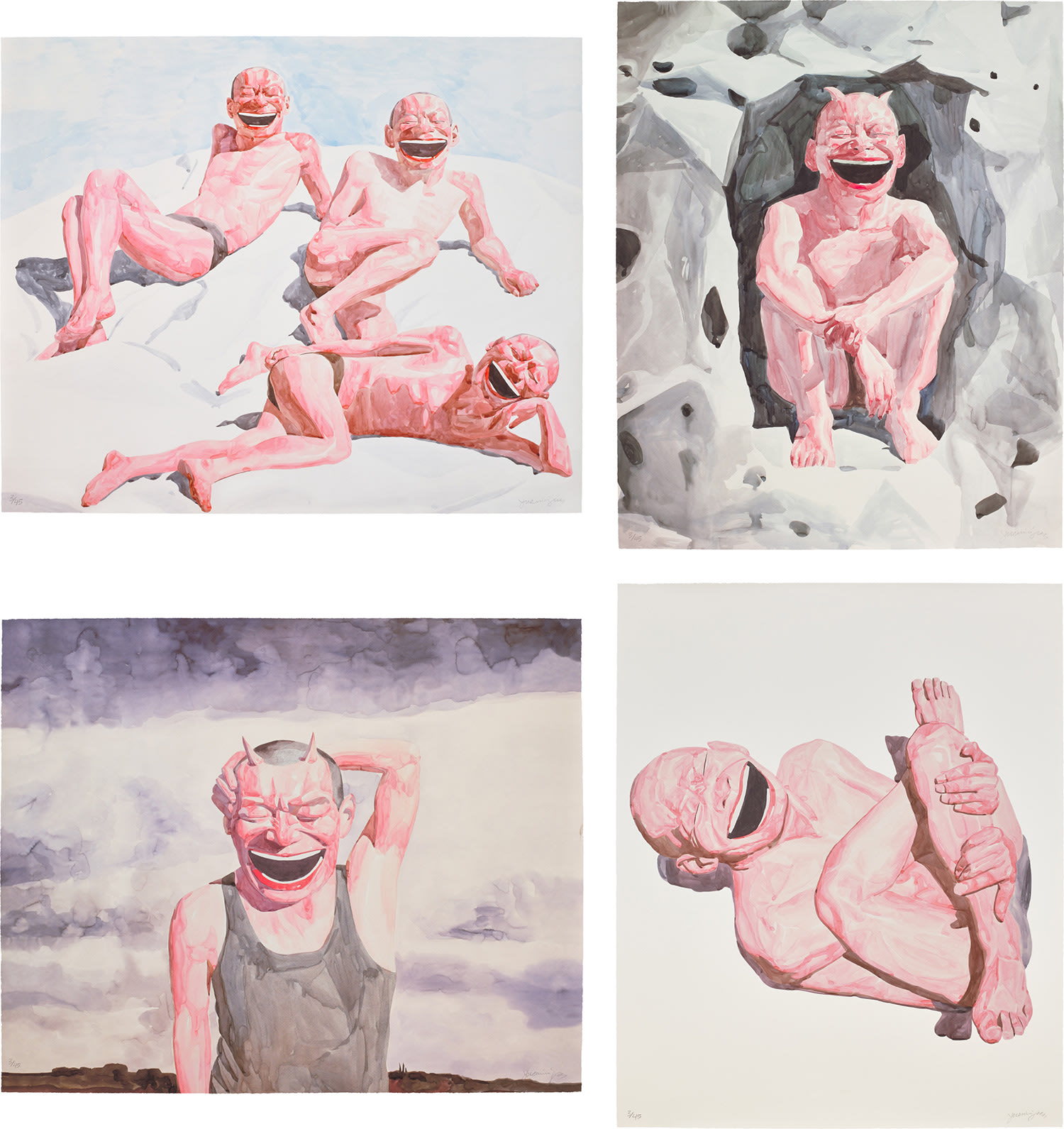












11Ж
Yue Minjun
Untitled (Smile-ism No. 1-28)
each signed ‘Yueminjun' lower right; numbered '3/45' lower left
lithograph on archival paper
No. 1-6, 16, 23: 110 x 80 cm. (43 1/4 x 31 1/2 in.)
No. 7, 9, 24: 80 x 110 cm. (31 1/2 x 43 1/4 in.)
No. 10-14, 17, 18, 20-22, 26: 110 x 90 cm. (43 1/4 x 35 3/8 in.)
No. 8, 15, 19, 25, 27, 28: 90 x 110 cm. (35 3/8 x 43 1/4 in.)
No. 7, 9, 24: 80 x 110 cm. (31 1/2 x 43 1/4 in.)
No. 10-14, 17, 18, 20-22, 26: 110 x 90 cm. (43 1/4 x 35 3/8 in.)
No. 8, 15, 19, 25, 27, 28: 90 x 110 cm. (35 3/8 x 43 1/4 in.)
Published by Art Issue Editions, New York in 2006, each work is number 3 from an edition of 45.